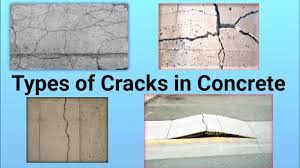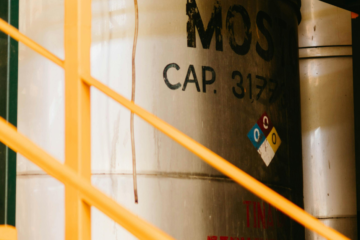What is Structural Steel in 2024: Definition, Properties, Types, and Modern-Day Uses in 2024
Introduction
Structural steel is integral to the modern construction industry, playing a crucial role in creating robust and innovative structures. From the towering skyscrapers that define city skylines to the intricate bridges spanning rivers, structural steel provides the essential framework for countless engineering marvels. As we advance into 2024, ongoing advancements in steel production and technology continue to expand its applications and enhance its performance. This comprehensive guide will provide an in-depth look at what structural steel is, its key properties, the different types available, and its diverse modern uses.
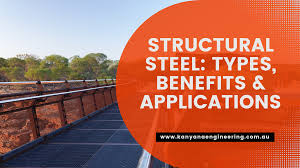
1. What is Structural Steel?
1.1 Definition and Overview
Structural steel is a category of steel used specifically for constructing load-bearing frameworks in buildings and other structures. It is produced through the controlled melting and alloying of iron and other elements, resulting in a material that exhibits desirable mechanical properties such as high strength, durability, and versatility.
Key Characteristics:
- High Strength-to-Weight Ratio: Allows for lighter, more efficient designs.
- Versatility: Can be shaped into various forms, including beams, columns, and plates.
- Fabrication: Typically processed in factories where it is cut, shaped, and assembled before being transported to the construction site.
1.2 Historical Perspective
Structural steel has transformed the construction industry since its introduction in the 19th century. The development of steelmaking techniques, such as the Bessemer process, allowed for mass production of steel at lower costs, revolutionizing architecture and engineering.
Historical Milestones:
- 1850s: Introduction of the Bessemer process, significantly lowering steel production costs.
- 1889: The Eiffel Tower in Paris, a landmark in structural steel usage, demonstrated steel’s potential for large-scale structures.
- 1900s: Advances in welding and bolting techniques expanded steel’s applications in construction.
2. Key Properties of Structural Steel
2.1 Strength and Durability
Structural steel is valued for its exceptional strength. Its ability to withstand large forces without deforming makes it ideal for load-bearing applications. The strength of structural steel is measured in terms of yield strength and tensile strength.
Detailed Properties:
- Yield Strength: The stress at which steel begins to deform plastically. Common structural steel grades like ASTM A36 have a yield strength of approximately 36,000 psi.
- Tensile Strength: The maximum stress steel can withstand while being stretched before breaking. Structural steels typically have tensile strengths ranging from 58,000 to 80,000 psi.
Application Examples:
- High-Rise Buildings: Steel frames support the weight of multiple floors, enabling skyscrapers to reach great heights.
- Bridges: Steel’s strength is crucial for supporting heavy loads and spans.
2.2 Ductility and Malleability
Ductility is the ability of steel to deform under tensile stress, while malleability refers to its ability to be shaped into thin sheets or complex forms. These properties are crucial for adapting steel to various construction needs and ensuring it can absorb and dissipate energy during events like earthquakes.
Technical Insights:
- Elongation: Structural steel typically exhibits an elongation of 20% to 30% before fracture, allowing it to bend and absorb energy.
- Workability: Steel can be rolled, forged, and machined into different shapes and sizes.
Real-World Example:
- Seismic Zones: Steel structures are designed to flex and redistribute forces during an earthquake, reducing the risk of collapse.
2.3 Corrosion Resistance
Corrosion is a significant concern for steel exposed to moisture and chemicals. Various methods are employed to enhance steel’s resistance to corrosion, including galvanization, painting, and the application of corrosion-resistant alloys.
Protective Measures:
- Galvanization: Coating steel with zinc to prevent rust. Common in outdoor and marine applications.
- Paint Coatings: Specialized paints that provide a barrier to moisture and chemicals.
Environmental Considerations:
- Marine Environments: Structures like piers and offshore platforms require additional protective measures due to the high salinity of seawater.
2.4 Fire Resistance
Structural steel’s performance in high temperatures is crucial for safety during fires. Although steel maintains its structural integrity longer than many other materials, its strength diminishes as temperatures rise.
Fire Protection Methods:
- Intumescent Coatings: Expand when exposed to heat, providing an insulating layer to protect the steel.
- Fire-Resistant Boards: Applied to steel structures to enhance their fire resistance.
Example of Application:
- High-Rise Buildings: Fire-resistant coatings are applied to steel columns and beams to maintain structural stability in case of a fire.
2.5 Sustainability and Environmental Impact
Structural steel is one of the most sustainable materials used in construction due to its recyclability. The steel industry is actively working to reduce its environmental impact through improved production techniques and increased use of recycled materials.
Sustainability Features:
- Recyclability: Steel can be recycled repeatedly without degrading its quality, reducing the demand for raw materials.
- Energy Efficiency: Modern steel production processes are designed to minimize energy consumption and emissions.
Industry Initiatives:
- Green Building Standards: Incorporating recycled steel and using energy-efficient production methods to meet sustainability goals.
3. Types of Structural Steel
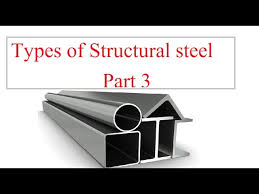
3.1 Carbon Steel
Carbon steel is the most common type of structural steel, characterized by its carbon content, which impacts its strength and hardness. It is widely used in construction due to its balance of strength and cost-effectiveness.
Grades and Properties:
- ASTM A36: A standard grade with good weldability and machinability, used for general structural applications.
- ASTM A992: A high-strength steel used for structural shapes in buildings, providing better performance and weldability.
Applications:
- Building Frames: Used in beams, columns, and trusses for its strength and cost-effectiveness.
- Pipes and Tubes: Commonly used in various structural applications.
3.2 Alloy Steel
Alloy steel includes additional elements such as chromium, nickel, or molybdenum to enhance its properties. These elements improve hardness, toughness, and resistance to wear and corrosion.
Common Alloys:
- Chromoly Steel: Contains chromium and molybdenum, used in high-stress applications like aerospace and automotive parts.
- Nickel-Steel Alloys: Used in environments where resistance to extreme temperatures and corrosion is required.
Applications:
- Heavy Machinery: Alloy steels are used in high-strength components of machinery and equipment.
- Tools and Dies: Essential for manufacturing tools that require high hardness and wear resistance.
3.3 Stainless Steel
Stainless steel is an alloy of steel with chromium, which provides excellent corrosion resistance. It is often used in environments where steel is exposed to moisture, chemicals, or high temperatures.
Grades and Properties:
- 304 Stainless Steel: The most common grade, offering good corrosion resistance and weldability, used in kitchen equipment and architectural applications.
- 316 Stainless Steel: Contains molybdenum for enhanced corrosion resistance, ideal for marine environments.
Applications:
- Architectural Features: Used in facades, handrails, and decorative elements due to its appearance and durability.
- Medical Instruments: Provides a sterile surface and resistance to chemicals.
3.4 Tool Steel
Tool steel is designed for manufacturing tools and dies, known for its hardness, wear resistance, and ability to maintain a sharp edge. Although not typically used for structural purposes, it is essential for industrial applications.
Types:
- High-Speed Steel (HSS): Used for cutting tools and drills due to its ability to retain hardness at high temperatures.
- Cold Work Tool Steel: Used for tools that operate at room temperature, such as punches and dies.
Applications:
- Cutting Tools: Includes drill bits, saw blades, and milling cutters.
- Dies and Molds: Used in shaping and forming materials.
3.5 Weathering Steel (Corten Steel)
Weathering steel, or Corten steel, is designed to develop a protective rust-like appearance that inhibits further corrosion. Its unique finish and durability make it suitable for specific architectural and artistic applications.
Characteristics:
- Rust Formation: Forms a stable, protective oxide layer that prevents further corrosion.
- Aesthetic Appeal: Provides a distinctive, rugged appearance that can blend with natural surroundings.
Applications:
- Outdoor Sculptures: Popular in art installations due to its unique weathered look.
- Architectural Facades: Used in buildings where a rustic or industrial appearance is desired.
4. Modern-Day Uses of Structural Steel
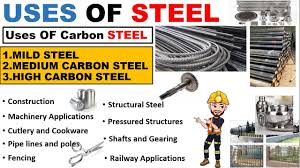
4.1 Construction Industry
Structural steel is a fundamental material in the construction of buildings and infrastructure. Its strength, versatility, and ease of assembly make it ideal for creating a variety of structures.
Detailed Applications:
- High-Rise Buildings: Steel frames allow for the construction of tall structures with large open spaces.
- Residential Construction: Steel is increasingly used in modern homes for both structural and aesthetic purposes.
Case Study:
- The Shard in London: Uses a structural steel frame to achieve its iconic tapering shape and height.
4.2 Transportation Infrastructure
Structural steel is essential for constructing and maintaining transportation infrastructure. Its ability to handle large loads and withstand environmental stress is critical for these applications.
Examples:
- Bridges: Steel is used in bridges for its strength and ability to span long distances.
- Tunnels: Steel linings support the tunnel structure and provide stability.
Notable Project:
- The Brooklyn Bridge: An early example of using steel in bridge construction, demonstrating its capability to support heavy traffic loads.
4.3 Industrial Applications
In industrial settings, structural steel is used to build factories, warehouses, and storage facilities. Its durability and strength are crucial for supporting heavy machinery and equipment.
Detailed Examples:
- Manufacturing Plants: Steel frames support large-scale machinery and equipment.
- Storage Facilities: Large, open-span steel structures are used for warehouses and distribution centers.
Case Study:
- Amazon Fulfillment Centers: Use steel structures to create expansive storage and distribution spaces.
4.4 Energy Sector
The energy sector relies on structural steel for constructing infrastructure such as oil rigs, pipelines, and power plants. Steel’s resilience and strength are crucial for withstanding the harsh conditions of these environments.
Applications:
- Oil Rigs: Steel is used in the construction of offshore and onshore rigs to support drilling equipment.
- Power Plants: Steel structures are used for supporting boilers, turbines, and other critical components.
Example:
- Offshore Oil Platforms: Use steel to withstand harsh marine environments and support heavy equipment.
4.5 Architectural Design
Architects and designers use structural steel to create visually striking and innovative designs. Its versatility allows for a wide range of architectural styles, from modern skyscrapers to intricate decorative elements.
Design Examples:
- Modern Skyscrapers: Steel allows for tall, sleek designs with large glass facades.
- Public Art Installations: Sculptures and installations often use steel for its artistic and structural properties.
Notable Project:
- The Guggenheim Museum in Bilbao: Features a unique, curvilinear design made possible by the flexibility and strength of structural steel.
5. Innovations and Trends in Structural Steel (2024 Edition)
5.1 Advances in Steel Production
The steel industry continues to innovate with new production techniques and materials that enhance steel’s performance and reduce environmental impact.
Recent Innovations:
- High-Strength Low-Alloy (HSLA) Steels: Provide enhanced mechanical properties and improved weldability.
- Electric Arc Furnace (EAF) Technology: Reduces energy consumption and carbon emissions compared to traditional blast furnaces.
Emerging Trends:
- 3D Printing of Steel Components: Enables the creation of complex shapes and customized structural elements.
5.2 Sustainable Construction Practices
Sustainability is a key focus in modern construction, and structural steel plays a significant role due to its recyclability and efficiency.
Sustainable Practices:
- Use of Recycled Steel: Reduces the need for virgin materials and lowers the carbon footprint.
- Energy-Efficient Production: Innovations in production processes aim to minimize energy use and emissions.
Green Building Certifications:
- LEED Certification: Projects incorporating structural steel can achieve higher LEED ratings by utilizing recycled materials and energy-efficient practices.
5.3 Smart Steel and Technology Integration
Advancements in technology are integrating with structural steel to create smart materials that enhance safety and performance.
Technological Innovations:
- Self-Healing Coatings: Contain materials that repair minor damage automatically, extending the lifespan of steel structures.
- Structural Health Monitoring Systems: Use sensors embedded in steel structures to monitor stress, strain, and other parameters in real-time.
Future Prospects:
- Integration with IoT: Smart steel structures may connect with the Internet of Things (IoT) to provide data-driven insights and predictive maintenance.
6. Challenges and Considerations
6.1 Cost Factors
While structural steel offers long-term benefits, its initial costs can be high. Factors affecting cost include material prices, fabrication, and transportation.
Cost Considerations:
- Raw Material Prices: Fluctuations in steel prices due to market conditions and trade policies.
- Fabrication and Labor Costs: Expenses related to cutting, shaping, and assembling steel components.
Cost Management:
- Budget Planning: Accurate cost estimates and efficient project management are essential for controlling expenses.
6.2 Environmental Concerns
The production of steel is associated with significant energy use and carbon emissions. Addressing these concerns involves adopting more sustainable practices and improving production technologies.
Environmental Impact:
- Carbon Footprint: Steel production contributes to greenhouse gas emissions. The industry is working on reducing these through cleaner technologies.
- Waste Management: Efforts are being made to minimize waste and increase the use of recycled materials.
6.3 Supply Chain Issues
Global supply chain disruptions can impact the availability and cost of structural steel. Factors such as geopolitical events, trade policies, and logistical challenges can affect supply chains.
Supply Chain Strategies:
- Alternative Suppliers: Diversifying sources to reduce dependency on any single supplier.
- Inventory Management: Implementing strategies to manage inventory levels and mitigate supply chain risks.
7. Conclusion
Structural steel remains a cornerstone of modern construction due to its unparalleled strength, versatility, and sustainability. As we move into 2024, ongoing advancements and innovations continue to enhance its performance and expand its applications. By understanding the properties, types, and modern uses of structural steel, professionals can leverage its benefits to create resilient, efficient, and aesthetically pleasing structures.
8. FAQs
- What is the main advantage of using structural steel in construction?
- Structural steel offers a high strength-to-weight ratio, allowing for the construction of strong, lightweight structures.
- How does structural steel contribute to sustainability?
- It is 100% recyclable, reducing the need for raw materials and minimizing waste. Modern production methods also focus on reducing energy consumption and emissions.
- What are the different types of structural steel?
- Types include carbon steel, alloy steel, stainless steel, tool steel, and weathering steel, each with unique properties and applications.
- How does corrosion affect structural steel, and how can it be prevented?
- Corrosion can weaken steel over time. Prevention methods include galvanization, painting, and using corrosion-resistant alloys.
- What advancements are being made in steel production and technology?
- Innovations include high-strength low-alloy steels, energy-efficient production methods, and the integration of smart technologies like self-healing coatings and structural health monitoring systems.
- What are the typical applications of structural steel in the construction industry?
- Structural steel is used in building frameworks, bridges, industrial facilities, and architectural designs, providing support and stability for a wide range of structures.
- How does structural steel perform in seismic zones?
- Structural steel’s ductility allows it to flex and absorb energy during seismic events, reducing the risk of structural failure.
- What are the key considerations when selecting structural steel for a project?
- Considerations include the material’s strength, durability, corrosion resistance, cost, and environmental impact.
- How does structural steel compare to other construction materials like concrete or wood?
- Steel offers higher strength-to-weight ratios and flexibility compared to concrete and wood, making it suitable for large spans and tall structures.
- What are some recent trends in the use of structural steel?
- Recent trends include the use of recycled steel, sustainable production practices, and smart steel technologies that enhance safety and performance.
If you want to get more knowledge about this so read more.
If you want more articles about Civil Engineering click on link.
- Recent trends include the use of recycled steel, sustainable production practices, and smart steel technologies that enhance safety and performance.


